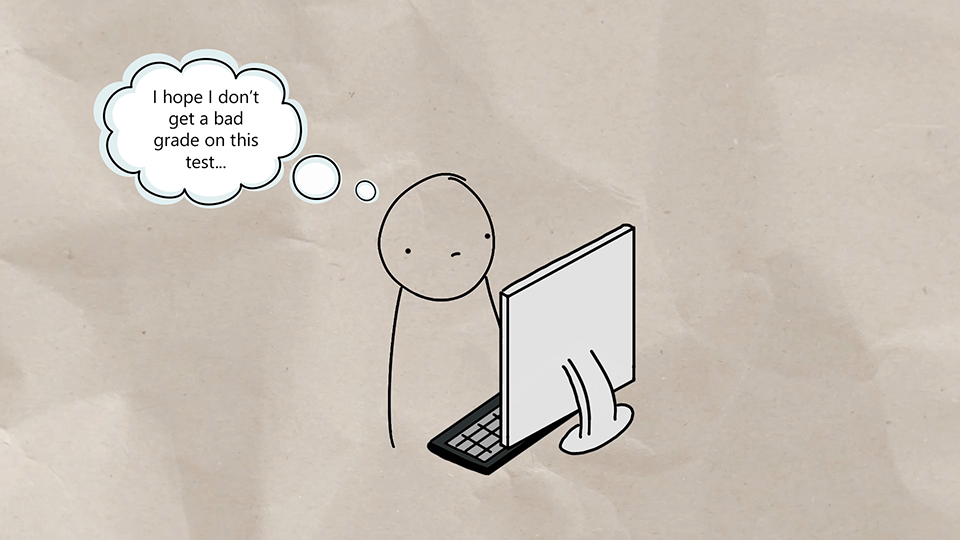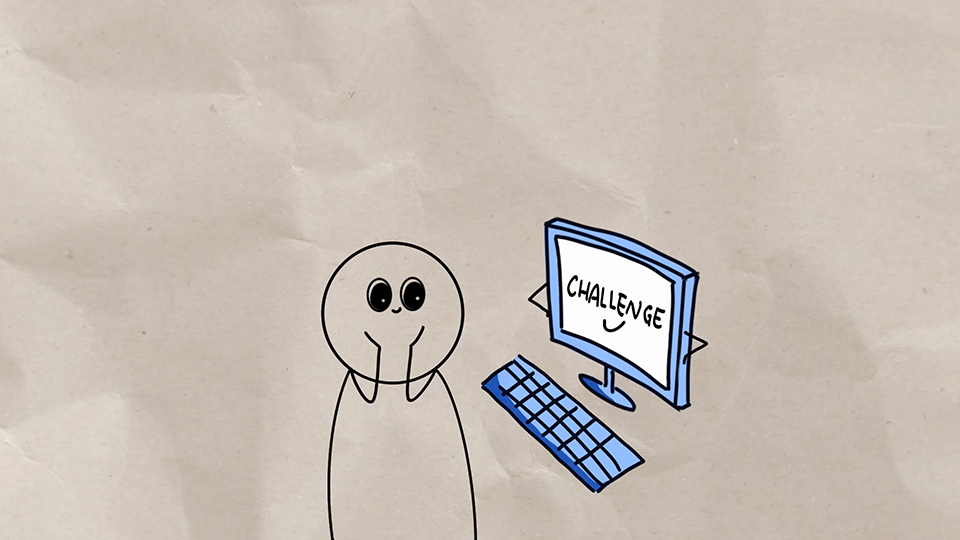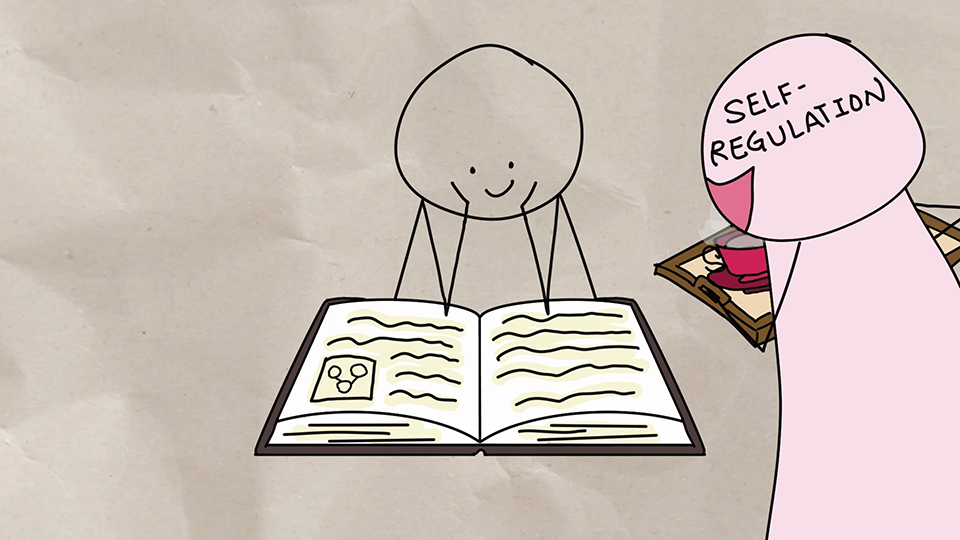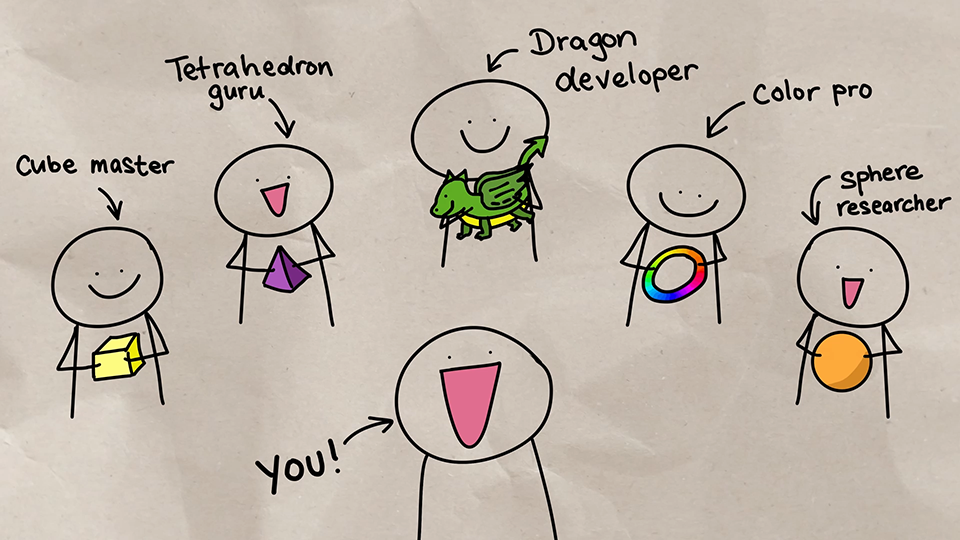Explore goal orientation as a component of self-regulation
For your team members to do well in training and the upcoming project, they need to learn effectively. You realize that the team consists of different types of learners with various motivations. In this unit, you'll learn to recognize your team's goal orientations. This recognition will help you identify which method of training and evaluation will work best for your team based on the team members' goal orientations. You'll also discover that mastery-based goals are the most effective goals for learning and retention.
Goal orientation theory
Goal orientation is how a person is motivated to learn and engage in learning. As a component of self-regulation, goal orientation affects how learners persist in tasks and handle failure.
Performance orientation versus mastery orientation
The theory of goal orientation originated when groups of students were given tests designed to determine what motivated them to achieve. What these tests revealed was that people either want to:
Demonstrate their competence to others, which is performance orientation.
Develop knowledge for the sake of learning, which is mastery orientation.
Some learners do well with performance goals, while others succeed by setting mastery goals. If you're in a teaching or mentoring role, it might help to know that:
Performance goals work well to teach information and facts that learners must memorize.
Mastery goals work better to teach how to perform analysis and apply understanding of concepts.
Performance orientation
Learners who set performance goals are motivated by activities and learning methods where the end result is a mark or grade. Consider the learner whose first question is "Is this going to be on the test?" That question suggests the learner has already set performance goals and is focusing on doing well on the test. Grades could be the primary (or only) feedback that this learner receives, so it's important to them.
The downside for performance-oriented learners is they can become stressed when it's exam time, to the point of near panic. This stress can affect everyone around them. High stress levels aren't conducive to effective learning or to mental health.

Performance orientation can be divided further into:
Performance approach orientation. A learner with this orientation typically wants to demonstrate competence. For example, learners with this orientation might be motivated to do well so that others think they're intelligent.
Performance avoidance orientation. A learner with this orientation typically wants to avoid a demonstration of incompetence. For example, learners with this orientation might be motivated to do well because they don't want others to make fun of them for getting poor grades.
Mastery orientation
Mastery goal orientation is often described as loving learning for its own sake. Mastery-based goals are considered the most effective goals for learning and retention. Learners who have mastery goal orientations:
Have a fundamental interest in learning and a positive attitude toward it.
Are actively engaged in their learning.
Feel that effort leads to success and that they can correct failure by changing their strategy.
Feel guilty if they believe they didn't try hard enough.
Prefer challenging work and risk-taking.
Will spend more time on tasks, if necessary.
Persist in the face of difficulty.
Note
The characteristics of mastery goal orientation and growth mindset are similar. A growth mindset is a mental attitude that you can learn anything you don't know and that you can improve your abilities through dedication and hard work.

Mastery orientation can be divided further into:
Mastery approach orientation. The goal is to develop confidence for the sake of learning and understanding. For example, learners with this orientation are motivated to learn because they enjoy learning, even if they make mistakes.
Mastery avoidance orientation. The goal is to avoid misunderstanding. For example, people with this orientation are motivated to learn so they don't fail to meet the high achievement standards they set for themselves.
Note
Two ways to identify a learning environment that's focused on mastery orientation are:
- People feel good about learning. This feeling motivates everyone to learn more.
- People compare their current position to their past position instead of comparing themselves to others.

Support mastery goals
As a mentor, you can influence the goal orientations that your learners have. To maximize learning and achievement, you should aim to foster mastery goal orientations and minimize performance avoidance orientations. Here are a few methods you can use to support mastery goals:
Create tasks that focus on a higher level of thinking, like analyzing and creating.
Use different kinds of learning activities that are challenging, organized, and perceived as useful and interesting to learners.
Allow learners to learn at their own pace.
Tip
Mastery goals can take pressure off learners who are struggling or disengaged or have a learning difficulty. When these learners set mastery goals, it helps them achieve success with their current abilities.
Give learners the opportunity to be responsible for their learning, make decisions, and assume leadership roles.
Use various assessment methods, incentives, and rewards to evaluate each learner's individual progress.
Note
Learners who have goal orientations that result in them being afraid of making mistakes will become unmotivated if they fail. You can change the stigma around failure by reinforcing that it's an important part of the learning process. Reiterate that mistakes actually mean they're learning.
Group learners with others who have different abilities and viewpoints to promote cooperation and collaboration.
Tip
Try grouping people together who have different skill sets and temperaments. The people in a group might seem mismatched at first. But one person's skills might compensate where another person's are lacking.

What's motivating your team?
You've noticed that your team members seem motivated by various things. One person is eager to present a code idea to the team, while another happily works alone. Some team members like to work in groups. They like to propose ideas and receive critiques and seem to thrive on feedback. Others are reluctant to share their work. They're concerned they might make a mistake that will make them look bad to the team.
As training draws closer to its end, several team members have approached you asking if there will be a test or evaluation. For some, a test would be a challenge and possible learning experience. For others, the possibility that they'll have to take a test is terrifying. What will everyone think of them if they do poorly?
Examine your team's goal orientation
As the developer team lead, you need to decide how to organize your team's training. You need to choose between three approaches to training:
Approach #1: Independent study followed by evaluation by peers and experts.
Approach #2: A coding class with a test at the end.
Approach #3: A coding workshop conducted by peers and experts.
You want to maximize the learning potential of your team and minimize stress levels. You meet with your team members and discover their goal orientations. This table lists the results of those conversations:
| Training approach | Description | Responses of team members who have performance goal orientation | Responses of team members who have mastery goal orientation |
|---|---|---|---|
| #1: Independent study and then evaluation | Team members will learn by completing assignments on their own. Everyone will then meet and evaluate each other's work. Senior developers will offer their evaluations too, because they know the topics well. | They want to do well so they can impress their teammates and the senior developers with their work. | They're looking forward to the challenge of learning new code. They want to get feedback (good or bad) from the team and senior developers because it will help them improve. |
| #2: Coding class with a test | Team members will participate in a coding class. Everyone will work on assignments and turn them in for a grade. There will be a test at the end. The person with the highest grade will get special recognition. | It's important to them that they do better than their teammates. They hope the subject matter will be easy because they hate to fail. They're already stressed out about a possible test. | Learning how to write code well is most important to them. It's more important than a test score. They're not stressed out about tests because they enjoy evaluating what they've learned. |
| #3: Coding workshop | The team will learn together in a workshop setting. There won't be any grading. Experienced developers will be there to help write, run, and troubleshoot the code. Everyone will work in groups to learn from each other's code. Participants will be asked to volunteer their code samples as solutions to problems. The group will evaluate these samples. | They're motivated to impress their teammates and senior developers by being the first to think of elegant ways to solve problems. They might avoid volunteering solutions that they think are less than perfect so they aren't criticized. | They want to learn as much as they can from their teammates and senior developers. They'll enthusiastically share their work with the group, even if it's incomplete or has problems. Criticism doesn't bother them as long as they're learning. |
Reflection
Based on the responses you received from your team:
Assuming an equal number of respondents have performance and mastery orientations, which training approach would be most effective?
If there are more respondents who have performance orientations, which approach would be most effective?
If there are more respondents who have a mastery orientation, which approach would be most effective?